Introduction to SEO-Optimized Website Design and Its Importance
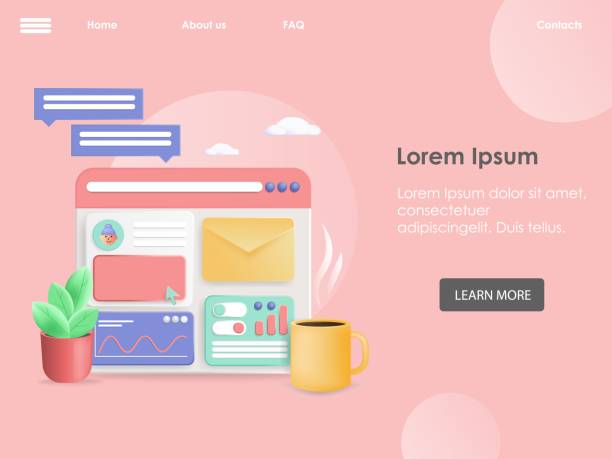
In today’s digital world, an online presence is vital for every business. But simply having a website is not enough; it’s crucial that your website is seen by your target audience. This is where the concept of SEO-optimized website design becomes important. #SEO or #Search_Engine_Optimization is a process by which your website is designed and coded in such a way that search engines like Google, Bing, and Yahoo can easily crawl it, understand its content, and rank it higher in search results. This leads to an increase in #organic_traffic, meaning visitors who come to your website through search. An SEO-centric design is not limited to keywords; it also includes site architecture, loading speed, user experience, and quality content. The importance of this approach stems from the fact that most users only pay attention to the first page of search results. Therefore, if your website is on subsequent pages, its visibility is drastically reduced. The main goal of SEO-optimized website design is to increase your website’s visibility in search results and attract more audiences, which ultimately leads to increased customers and revenue for your business. In the rest of this comprehensive article, we will cover various aspects of this process to help you on your way to having a successful website.
Do you dream of a thriving online store but don’t know where to start?
Rasaweb is your comprehensive e-commerce website design solution.
✅ Attractive and user-friendly design
✅ Increased sales and revenue⚡ Get free consultation
Key Pillars of Search Engine Optimized Website Design
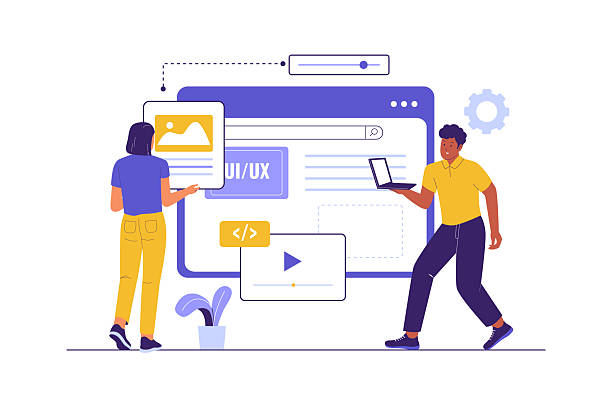
To achieve an optimized website design for search engines, special attention must be paid to three fundamental pillars: Technical SEO, On-Page SEO, and Off-Page SEO. Technical SEO deals with your website’s infrastructure, including loading speed, mobile-friendliness, URL structure, robots.txt file, and XML Sitemap. These elements ensure that search engines can effectively crawl and index your site. Without a strong technical foundation, your efforts in other SEO areas may be fruitless. On-Page SEO refers to optimizing the content and visible elements on your website’s pages. This includes the correct use of keywords in page titles, meta descriptions, heading tags (H1, H2, H3), image optimization, and internal link structure. The goal of On-Page SEO is to help search engines understand the main topic of each page and its relevance to user searches. Finally, Off-Page SEO involves activities performed outside your website that help increase its authority and credibility. The most important part of Off-Page SEO is building high-quality backlinks from other reputable websites. Social media sharing and activity in relevant forums can also indirectly help improve Off-Page SEO. A comprehensive strategy covering all three of these pillars is essential for long-term success in search results, and all three complement each other in achieving the goals of SEO-optimized website design.
Technical Aspects of SEO-Compliant Website Design
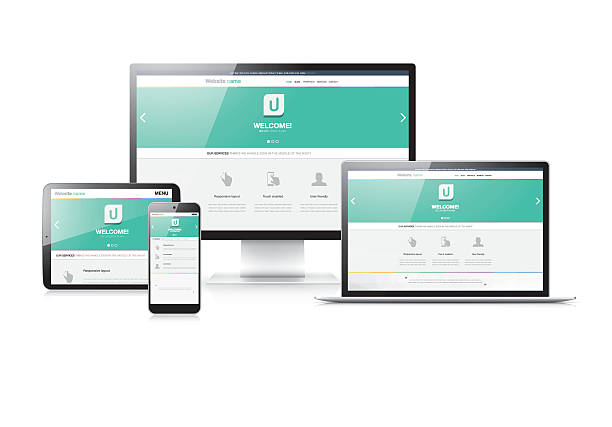
Website design compliant with SEO principles requires careful attention to numerous technical aspects that directly impact your website’s crawlability, indexing, and ranking by search engines. One of the most important aspects is site loading speed. Today’s users are impatient, and search engines don’t like slow sites; this directly affects user experience (UX) and ultimately SEO. Using optimized images, compressing CSS and JavaScript files, and using a CDN (Content Delivery Network) are ways to increase speed. Another point is mobile-friendliness. Given the significant increase in searches via mobile devices, your website must be fully responsive (Responsive) to display correctly on any screen size. Google has prioritized mobile-first indexing, meaning your site’s mobile version is the criterion for indexing and ranking.
Other vital technical aspects include: using the secure HTTPS protocol, creating an XML Sitemap which is a guide for search engine crawlers, and a robots.txt file that tells search engines which sections not to crawl. Implementing Structured Data (Schema Markup) is also highly important, as it helps search engines better understand your content and allows for the display of Rich Snippets in search results. These are just some of the tips that make an SEO-optimized website design possible.
Website Technical SEO Checklist

| Feature | Description | Importance |
|---|---|---|
| Site loading speed | Time required for full page load | Crucial |
| Mobile compatibility | Responsiveness of the website on different devices | Crucial |
| HTTPS Protocol | Use of SSL certificate for website security | High |
| XML Sitemap | A file explaining the website structure to search engines | High |
| Robots.txt file | Instructions for search engine crawlers | Medium |
| Structured data (Schema Markup) | Content encoding for better understanding by search engines | High |
| Broken links | Checking and fixing broken internal and external links | Medium |
Does your current e-commerce website design lead to lost customers and sales?
Rasaweb is your solution with modern and user-friendly e-commerce website designs!
✅ Significant increase in conversion rates and sales
✅ Building strong branding and gaining customer trust
⚡ Get free e-commerce website design consultation from Rasaweb!
Content Strategy and Keyword Research in SEO-Optimized Website Design
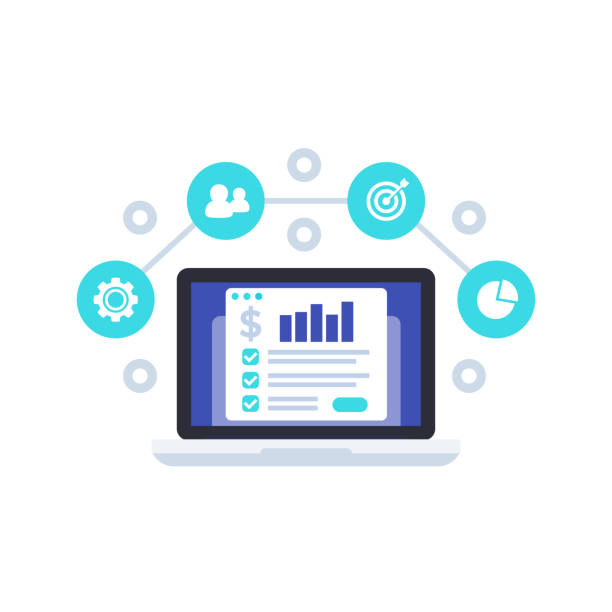
SEO-optimized website design would be incomplete without a strong content strategy and accurate keyword research. Content is the backbone of any website, and search engines look for high-quality, relevant, and valuable content for users. The first step in this path is keyword research. Keywords are phrases that users type into search engines to find information, products, or your services. Tools like Google Keyword Planner, Ahrefs, and SEMrush can help you identify high-volume and relevant keywords for your business. But search volume alone is not enough; attention must also be paid to the user intent behind the keywords. Is the user looking for information (informational keywords)? Do they want to buy a product (commercial keywords)? Or are they looking for a specific website (navigational keywords)? Understanding these intents helps you produce more precise content.
After identifying keywords, it’s time to produce content. Your content should be comprehensive, unique, informative, and engaging. Use keywords naturally in the text, headings, meta descriptions, and image Alt-text, and avoid keyword stuffing, as this can harm your SEO. Planning a content calendar and regularly updating old content is also of great importance. Video content, infographics, and podcasts can also help attract users and increase their time on the site. An SEO-optimized website design only reaches its peak efficiency when fed with exceptional content.
Best Practices for On-Page SEO

On-Page SEO is a set of techniques used to optimize your website’s pages to achieve better rankings in search results and attract more targeted traffic. In the process of SEO-optimized website design, attention to On-Page SEO details is crucial. One of the most important elements is the Title Tag. This tag is not only displayed at the top of the browser but is also the first thing users see in search results. It should contain the main keyword of the page and be attractive and enticing for clicks. The Meta Description, although not directly affecting ranking, can significantly impact your Click-Through Rate (CTR), so it should be an appealing summary of the page’s content with relevant keywords.
Proper use of heading tags (H1, H2, H3, etc.) is essential for structuring content. The H1 tag should be the main title of the page and usually contains the primary keyword. Other heading tags are used to divide content into smaller, more readable sections. Image optimization using descriptive Alt Text that includes keywords not only helps SEO but is also beneficial for visually impaired users. Your site’s URL structure should be short, descriptive, and include keywords. Also, strategic Internal Linking, meaning linking from one page to another within the same website, helps distribute “value” SEO across the site and assists search engines in discovering and indexing new pages. These techniques are all employed with the aim of providing the best user experience and helping search engines to deeply understand your content, which are fundamental principles of SEO-optimized website design.
The Impact of User Experience (UX) on SEO

In recent years, search engines have increasingly focused on User Experience (UX) as a ranking factor. This means that an SEO-optimized website design today must be designed as much for human users as it is optimized for search engine crawlers. Google and other search engines aim to provide the best results to their users, and if your website has a poor user experience, even with excellent content and strong technical SEO, you are unlikely to achieve high rankings. Metrics such as Core Web Vitals (including loading speed, interactivity, and visual stability) are directly related to UX, and Google considers them as ranking factors.
In addition to speed, other factors affecting user experience also impact SEO. Dwell Time, which is the amount of time a user stays on your site, and Bounce Rate, which is the percentage of users who view only one page and then leave the site, are all signals for search engines. If users immediately leave your site (high bounce rate), it indicates that your content or design did not meet their needs. Easy and intuitive navigation, attractive visual design, text readability, absence of intrusive pop-ups, and clear Call-to-Action buttons all contribute to improving UX. A website that is pleasant and functional for users not only increases their likelihood of returning but also sends positive signals to search engines, ultimately contributing significantly to the success of your SEO-optimized website design.
Building High-Quality Backlinks and Off-Page SEO
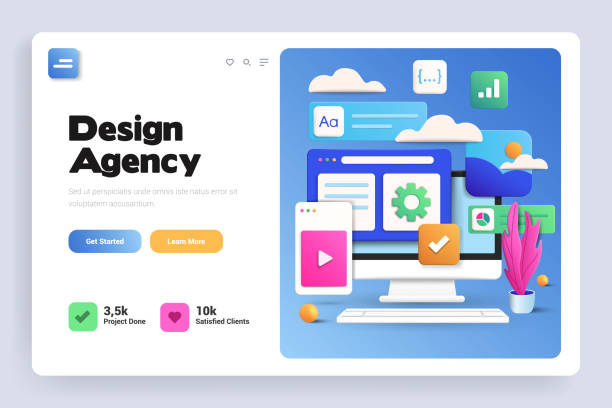
Off-Page SEO refers to all activities performed outside your website to increase your domain’s credibility and authority, ultimately helping to improve search engine rankings. The most important component of Off-Page SEO is building high-quality backlinks. Backlinks are links from other websites to your site and act as a vote of confidence from those sites. Search engines, especially Google, consider backlinks as an indicator of your content’s credibility and importance. However, not all backlinks are equal; quality takes precedence over quantity. High-quality backlinks are usually obtained from websites with high Domain Authority, relevant to your field, and with natural Anchor Text.
Effective strategies for acquiring backlinks include creating valuable and shareable content (which naturally attracts links), guest blogging on relevant blogs, influencer marketing, participation in reputable directories, and fixing broken links on other sites. Black hat SEO techniques such as buying backlinks or using Private Blog Networks (PBNs) should be strictly avoided, as these actions can lead to severe penalties from Google. Activity on social media, although not directly considered an SEO ranking factor, can help increase content visibility and consequently attract natural backlinks. An SEO-optimized website design will not be successful by relying solely on internal aspects; Off-Page SEO is an inseparable part of the optimization strategy.
Did you know that customers’ first impression of your company is your website? Multiply your business credibility with a powerful corporate website from Rasaweb!
✅ Custom and eye-catching design tailored to your brand
✅ Improved user experience and increased customer acquisition
⚡ Get free consultation!
Factors Determining Backlink Quality

| Factor | Description | Importance in SEO |
|---|---|---|
| Domain Authority (DA) | The credibility and power of the linking domain | Very High |
| Topical Relevance | Thematic consistency of the linking site with your site | High |
| Anchor Text | The clickable text of the link, which should be natural and relevant | Medium |
| Link Position | A link within the main content is more valuable than in the footer or sidebar | Medium |
| Number of external links | The number of outbound links from the linking page | Medium |
| Link Type (DoFollow/NoFollow) | DoFollow links transfer more authority | High |
Monitoring and Analysis for Success in SEO-Optimized Website Design
![]()
After implementing SEO-optimized website design strategies, your work has just begun. SEO is a continuous process, and precise monitoring and analysis of website performance are essential to identify opportunities and resolve potential issues. Powerful analytical tools are available to help you gain a deep understanding of how users interact with your site and its performance in search results. Google Analytics and Google Search Console are two free and essential tools from Google that every website owner should use.
Google Analytics provides comprehensive information about your site’s traffic, including the number of visitors, most visited pages, dwell time, bounce rate, traffic source (organic search, social media, direct, etc.), and user demographic information. By analyzing this data, you can discover user behavior patterns and identify your site’s strengths and weaknesses. Google Search Console also helps you view your website’s performance from Google’s search engine perspective. This tool provides information about the keywords users searched for to find your site, the number of clicks and impressions, any crawling or indexing issues, and incoming and outgoing links. Furthermore, paid tools like Ahrefs, SEMrush, and Moz offer deeper SEO insights, including competitor analysis, keyword tracking, and backlink reports. By continuously using these tools, you can optimize your SEO-optimized website design strategy and ensure long-term success.
Frequently Asked Questions
| Question | Answer |
|---|---|
| What is SEO-optimized website design? | SEO-optimized website design means creating a website that is not only attractive and user-friendly but also has its structure and content optimized for search engines (like Google) to achieve a higher ranking in search results. |
| Why is SEO-optimized website design important? | SEO-optimized website design increases your website’s visibility in search engines, attracts more organic (free) traffic, boosts your brand’s credibility and trust, and ultimately leads to increased sales and customers. |
| What are the key factors in SEO-optimized website design? | Key factors include site loading speed, responsiveness (mobile compatibility), appropriate URL structure, correct use of title and meta description tags (Meta Title & Description), image optimization, high-quality and user-friendly content, and internal and external linking. |
| What is the role of content in website SEO? | Content is king. High-quality, unique, relevant, and up-to-date content that naturally incorporates target keywords plays a crucial role in attracting users and sending positive signals to search engines. |
| How does site speed affect SEO? | Site speed is a significant Google ranking factor. Slow sites provide a poor user experience and can cause an increase in Bounce Rate, which harms your SEO ranking. |
| What does website responsiveness mean and why is it important for SEO? | Responsiveness means that your website displays correctly on any device (mobile, tablet, laptop). Since most searches are done via mobile, Google prioritizes responsive sites. |
| How to choose suitable keywords for the website? | Choosing suitable keywords is done by researching and analyzing user needs and competitors. Using tools like Google Keyword Planner, Ahrefs or Semrush can help in finding high-volume and relevant keywords. |
| What is the importance of internal and external linking in SEO? | Internal linking helps improve site navigation, distribute Page Authority, and assist search engine crawling. External links (backlinks) from reputable sites are also a sign of your site’s credibility and expertise for Google. |
| What is the role of User Experience (UX) in SEO? | Good user experience means ease of use, visual appeal, and user satisfaction with the site. Good UX makes users stay on the site longer and interact more, which are considered positive signals for SEO ranking. |
| What tools are available for website SEO analysis? | Several tools are available for SEO analysis, including Google Search Console for checking site performance in search, Google Analytics for traffic analysis, GTmetrix and PageSpeed Insights for speed checking, and paid tools like Ahrefs and Semrush for comprehensive SEO and competitor analysis. |
And other services of Rasa Web Advertising Agency in the field of advertising
Smart Conversion Rate Optimization: A professional solution for user engagement with a focus on marketing automation.
Smart Reportage: An exclusive service for online growth based on attractive UI design.
Smart Custom Software: An innovative service for increasing user engagement through user experience customization.
Smart Google Ads: Designed for businesses seeking campaign management through an SEO-centric content strategy.
Smart Website Development: An effective tool for customer behavior analysis with the help of intelligent data analysis.
And over a hundred other services in the field of internet advertising, advertising consulting, and organizational solutions
Internet Advertising | Advertising Strategy | Advertorial
Resources
SEO Website Design Articles on ZoomitSEO and Marketing Tips on Digikala MagComprehensive Website SEO Guide on SEO IranWebsite Design for Online Businesses on Namatek
? To elevate your business in the digital world, Rasaweb Afarin Digital Marketing Agency paves your path to growth and success by providing comprehensive services including professional website design, SEO optimization, and social media management.
📍 Tehran, Mirdamad Street, next to Bank Markazi, Kazeroun Jonoubi Alley, Ramin Alley No. 6


